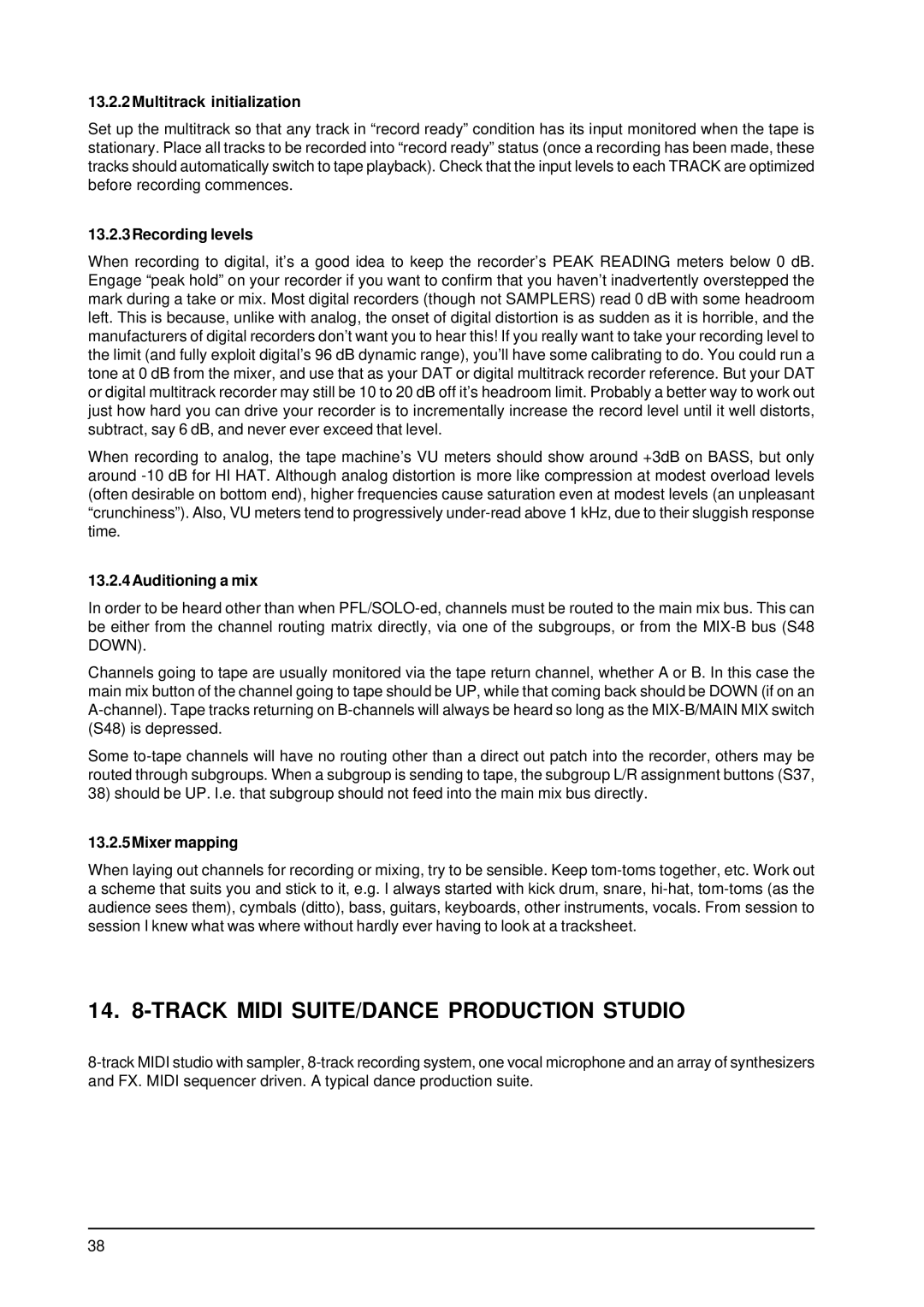13.2.2 Multitrack initialization
Set up the multitrack so that any track in “record ready” condition has its input monitored when the tape is stationary. Place all tracks to be recorded into “record ready” status (once a recording has been made, these tracks should automatically switch to tape playback). Check that the input levels to each TRACK are optimized before recording commences.
13.2.3Recording levels
When recording to digital, it’s a good idea to keep the recorder’s PEAK READING meters below 0 dB. Engage “peak hold” on your recorder if you want to confirm that you haven’t inadvertently overstepped the mark during a take or mix. Most digital recorders (though not SAMPLERS) read 0 dB with some headroom left. This is because, unlike with analog, the onset of digital distortion is as sudden as it is horrible, and the manufacturers of digital recorders don’t want you to hear this! If you really want to take your recording level to the limit (and fully exploit digital’s 96 dB dynamic range), you’ll have some calibrating to do. You could run a tone at 0 dB from the mixer, and use that as your DAT or digital multitrack recorder reference. But your DAT or digital multitrack recorder may still be 10 to 20 dB off it’s headroom limit. Probably a better way to work out just how hard you can drive your recorder is to incrementally increase the record level until it well distorts, subtract, say 6 dB, and never ever exceed that level.
When recording to analog, the tape machine’s VU meters should show around +3dB on BASS, but only around
13.2.4Auditioning a mix
In order to be heard other than when
Channels going to tape are usually monitored via the tape return channel, whether A or B. In this case the main mix button of the channel going to tape should be UP, while that coming back should be DOWN (if on an
Some
13.2.5Mixer mapping
When laying out channels for recording or mixing, try to be sensible. Keep
14. 8-TRACK MIDI SUITE/DANCE PRODUCTION STUDIO
38
